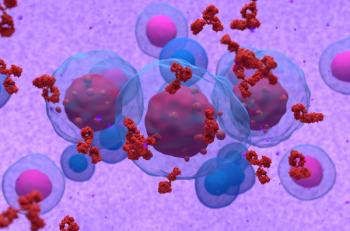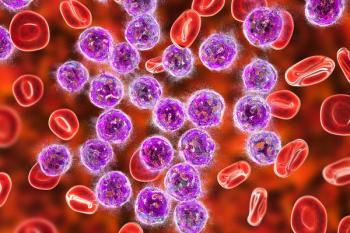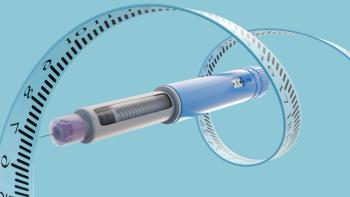
The Unusual Discovery of 10 Commonly Prescribed Medications - Part 2
This article will describe the unusual discovery of 5 commonly prescribed medications, many of which were through serendipitous events.
The process of drug discovery and testing can be a long, slow, and painful road. It’s estimated that for approximately every 10,000-15,000 new compounds identified, only 5 will be considered safe for testing in human volunteers and 1 will be approved by the FDA.1 Additionally, the journey from preclinical studies to FDA approval can take 10-15 years and range in cost from $800 million to $1.4 billion.
There are many factors that contribute to the process of drug discovery. One particular phenomenon that has been described in the literature involves serendipity, or chance discovery (i.e. finding one thing while looking for another). According to 1 analysis, serendipitous events were identified in the discovery of nearly 6% of all drugs in use today.2
This article will describe the unusual discovery of 5 commonly prescribed medications, many of which were through serendipitous events.
6. Rogaine (minoxidil)3
Minoxidil’s history dates back to the 1950s when it was initially studied to treat gastric ulcers. In preliminary animal studies, it failed to exert the properties researchers had hoped; however, they noted that the medication instead acted as a strong vasodilator, thereby reducing blood pressure. Scientists then produced different variations of the medication and began conducting clinical studies in hypertensive patients. In 1971, minoxidil was approved by the FDA for an emergency use protocol for severely ill patients, with a 2-week treatment duration.
Due to the drug’s effectiveness in lowering blood pressure, many clinicians exceeded the FDA’s two week recommendation. Soon after, cases of hypertrichosis (excessive hair growth) were being reported in 60-80% of patients who took the medication. A topical formulation was soon developed and clinical trials for patients with alopecia began in 1978. Ten years later, the FDA approved minoxidil, marketed as Rogaine, to regrow hair.
7. Cortisone4,5
Cortisone is a corticosteroid hormone that is released by the adrenal gland in response to stress. Exogenously administered cortisone is often used to treat a number of conditions, including arthritis and some skin conditions, through its effect on reducing inflammation,
The advent of cortisone dates back to World War 2. During the Battle of Britain, rumors reached the United States and United Kingdom that German fighter pilots were using cortisone to fly at extremely high altitudes without suffering from high altitude sickness. As a result, the United States made research of cortisone a top priority. By the early 1940s, US researchers from Merck discovered a process to manufacture cortisone, the first synthesis of which involved a 36-step process.
Although the initial rumor was baseless, cortisone acquired fame in the late 1940s as a “miracle drug” for treating rheumatic pain. Its treatment discovery stemmed from the assumption that that rheumatoid arthritis patients suffered from adrenal and hormone deficiency. An article from the New York Times in 1949 described the discovery of cortisone one of the greatest achievements in medical history.
8. Penicillin6,7
While the discovery of penicillin was certainly unusual, it is likely the most well-known discovery among this list. In 1928, Dr. Alexander Fleming, a bacteriologist at St. Mary’s Hospital, returned from a summer vacation to make unique discovery. While examining some colonies of Staphyloccocus aurerus, Fleming noted that a mold called Penicillium notatum had contaminated a Petri dish that was mistakenly left open. To his surprise, he found that the mold released some type of substance, or “juice,” that prevented the normal growth of the bacteria.
Although Fleming was able to isolate and identify the mold, he was unable to produce it in large quantities. During initial experiments, he found the mold “juice” to be effective against Gram-positive pathogens, which are responsible for a number of diseases; he subsequently named that “juice” penicillin.
When Fleming published his findings in 1929, there was little interest with his findings. It wasn’t until 1940 that 2 scientists were able to develop a process to mass produce penicillin for use during World War 2. Notably, by the end of the war, American pharmaceutical companies were producing 650 billion units of penicillin a month. The discovery of penicillin has been described as a “true turning point in human history” with some estimating that it has saved up to 200 million lives since its development.
9. Tamoxifen (Nolvadex)8,9
Tamoxifen is a nonsteroidal anti-estrogen FDA approved for treating breast cancer in both men and women. Tamoxifen has been described by many clinicians as one of the more important drugs in the history of cancer management although researchers had a much different intended use when they first synthesized the medication.
During the late 1950s researchers started investigating nonsteroidal anti-estrogens as antifertility agents to be used as a “morning after” pill. Initially, these drugs worked as exceptional antifertility agents in laboratory animals; however in humans, they were found to actually induce ovulation in sub-fertile women (notably, clomiphene was a nonsteroidal anti-estrogen that later received FDA approval from this testing).
By the end of the 1960s, development of anti-estrogens was put on the back burner. Interest would be revived in the early 1970s due to President Richard Nixon’s “war on cancer,” increasing scientific knowledge linking estrogen to breast cancer, and preliminary animal studies. The first study of tamoxifen in breast cancer was conducted in 1971 and showed positive results. Further studies over the next few decades would reinforce the survival benefit of tamoxifen in men and women with breast cancer.
10. Rapamune (sirolimus)10
Sirolimus is an mTOR inhibitor immunosuppressant indicated for the prophylaxis of organ rejection in patients aged ≥13 years receiving renal transplants and for the treatment of lymphangioleiomyomatosis (a rare lung disease).
Sirolimus was first isolated in 1972 from soil samples containing the bacterium Streptomyces hygroscopicus on Easter Island (a small Chilean island in the southeastern Pacific Ocean). Sirolimus was initially found to possess potent anticandida activity and therefore it was thought the medication could serve as a valuable antifungal agent.
Subsequent studies, however, revealed that sirolimus demonstrated strong immunosuppressive and anti-tumor properties in mammalian cells. Further studies would reinforce the medication’s benefit in this population leading to its approval by the FDA in September 1999.
Honorable mentions2,4,11
Drug name
Intended Use
FDA-Approved Use
Depakene (valproic acid)
Inert solvent in animal models
Seizure
Lithium
Gout, seizure
Bipolar disorder
Meprobamate
Antibacterial
Anxiety
Narcan (naloxone)
Constipation
Opioid overdose
Propecia (finasteride)
Benign prostatic hyperplasia (BPH)
Hair loss in men
Retrovir (zidovudine)
Leukemia
HIV infection
Thorazine (chlorpromazine)
Protozoal infections, surgical shock
Bipolar disorder, schizophrenia
References:
- About Drug Development Process. PPD. Available at: http://www.ppdi.com/About/About-Drug-Discovery-and-Development. Accessed May 17, 2017.
- Hargrave-Thomas E, Yu B, Reynisson J. Serendipity in anticancer drug discovery. World J Clin Oncol 2012; 3(1): 1-6.
- Bryan J. How minoxidil was transformed from an antihypertensive to hair-loss drug. The Pharmaceutical Journal. 2011 July.
- Li JJ. Laughing gas, Viagra, and Lipitor: the human stories behind the drugs we use. Oxford: Oxford University Press; 2006.
- Uchibayashi M. Forgotten episodes of the birth of cortisone. Yakushigaku Zasshi. 2001;36(1):70-5.
- Markel H. The real story behind penicillin. PBS. Sept 27 2013. Available at: www.pbs.org/newshour/rundown/the-real-story-behind-the-worlds-first-antibiotic/
- Tan SY, Tatsumura Y. Alexander Fleming (1881—1955): Discoverer of penicillin. Singapore Med J. 2015 Jul; 56(7): 366—367. doi: 10.11622/smedj.2015105.
- Jordan VC. Tamoxifen (ICI46,474) as a targeted therapy to treat and prevent breast cancer. British J Pharmacol. 2006;147(Suppl 1):S269-S276. doi:10.1038/sj.bjp.0706399.
- Jordan VC. Tamoxifen as the first targeted long-term adjuvant therapy for breast cancer. Endocr Relat Cancer. 2014 May 6;21(3):R235-46. doi: 10.1530/ERC-14-0092.
- Li J, Kim SG, Blenis J. Rapamycin: one drug, many effects. Cell Metabolism. 2014;19(3):373-379. doi:10.1016/j.cmet.2014.01.001.
- Ban T. The role of serendipity in drug discovery. Dialogues Clin Neurosci. 2006 Sep; 8(3): 335—344.
Newsletter
Stay informed on drug updates, treatment guidelines, and pharmacy practice trends—subscribe to Pharmacy Times for weekly clinical insights.

















































































































































































































